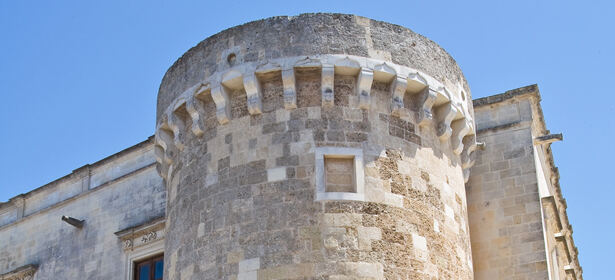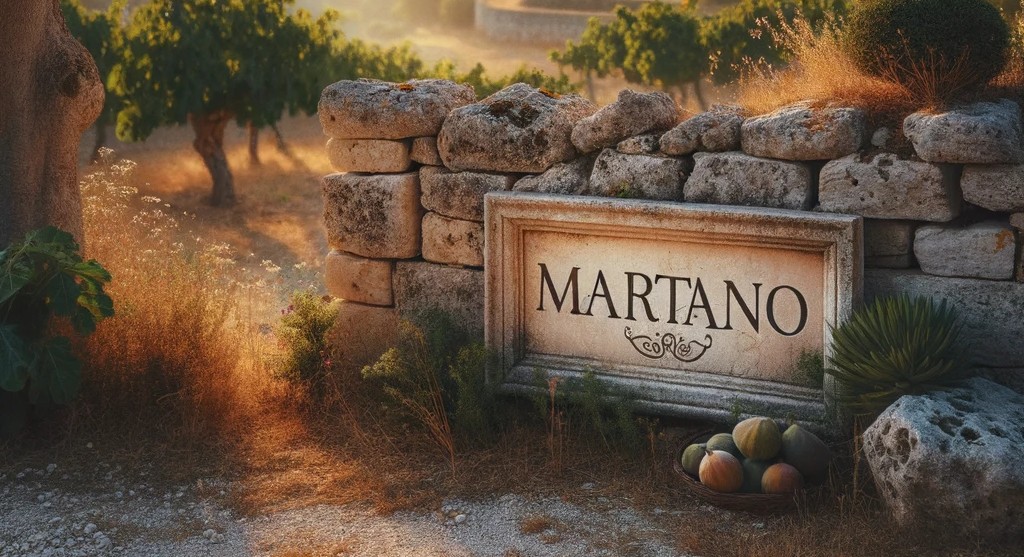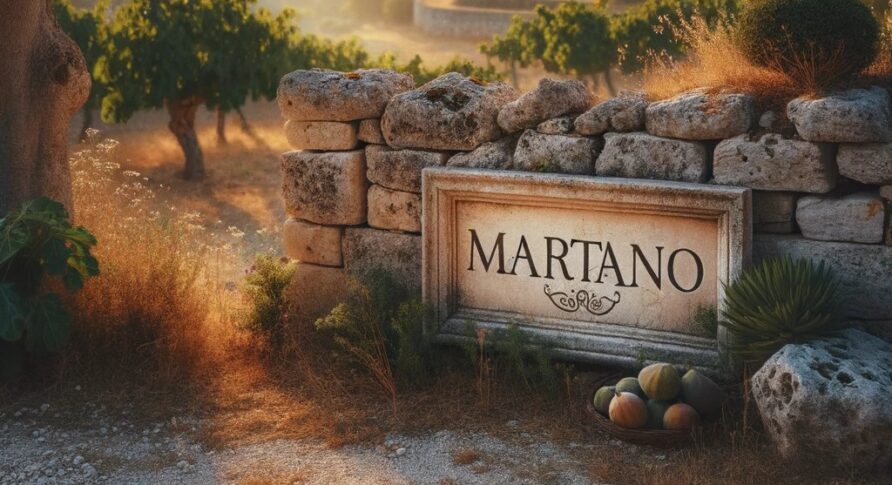B&B Martano
B&B Martano: the best places in Martano. Stay at a cozy Bed & Breakfast in Martano, and you’ll find yourself perfectly situated to explore the must-see local attractions, including the Palazzo Baronale, the sacred Monastero e Chiesa di Santa Maria della Consolazione, and the fascinating archaeological parks of Casale di Apigliano and Specchia dei Mori.
Take advantage of our Special Offer and receive up to 20% off when you book one of our elegant and spacious suites, complete with daily breakfast.
Stay: 3 nights
Price from €
35
/ night
- per person
Where is Martano with Map ?
Where is Martano? Martano is situated in the central-eastern part of Salento, boasting a strategic location that is crossed by the ancient Roman road Traiana Calabra, which connects Brindisi, Lecce, and Otranto.
The town is approximately 25 kilometers northwest of Lecce and is bordered by several municipalities, including Martignano and Calimera to the north, Carpignano Salentino to the east, Castrignano de’ Greci and Corigliano d’Otranto to the south, and Zollino to the west.
Martano is also conveniently close to the Adriatic coast, with popular seaside resorts such as Torre dell’Orso, Torre Sant’Andrea, Alimini, and Otranto all within a 15-20 kilometer radius.
Approfitta della nostra Offerta Speciale e ricevi fino al 20% di sconto prenotando una delle nostre eleganti e spaziose suite, a partire da:
€
35
notte
- a persona
The History of Martano
Menhir del Teofilo
Via Teofilo 53
Specchia dei Mori
SP 28
40.221, 18.2870
Roman Conquest
Martano is located between Lecce and Otranto, along the significant Traiana-Calabra route, built by the ancient Romans as a path to the East.
The presence of “menhir” (large upright stones) in Martano, along with other ancient artifacts, highlights the strategic importance of the place.
The original core of the historic center has a grid-like road system, suggesting the existence of a “cardo” and “decumano” (ancient Roman road structures), which might indicate a Roman settlement or fortress.
After the fall of the Roman Empire, Martano saw Byzantine colonization.


Beyond the year 1000, in the Norman period, in 1192 Martano was gifted to the knight Giorgio Remanno and later changed hands among various noble families.In 1480, during the Ottoman Turkish invasion that devastated Otranto, the people of Martano took refuge behind the city walls.After the Aragonese rule, Martano was strengthened with the construction of 7 towers, of which only two remain today.


Around Martano’s historic core, various districts arose, including Borgo di Santa Lucia and Borgo della Catumerea.In the mid-1700s, Martano experienced architectural growth with the construction of several palaces, including the one we’re in, formerly known as Palazzo Della Tommasa.
Martano, with its rich history, is a journey through time. The area has seen various civilizations, each leaving a mark on the urban and cultural fabric.Starting from prehistoric times, the menhir stand as evidence of ancient communities attracted to the area for its strategic location.
These megalithic structures, built by unknown hands, are shrouded in mystery and serve as early indicators of Martano’s importance.
With the Romans’ arrival, Martano became a key node in the region’s road network, evident from the ancient Traiana-Calabra route. The grid-like urban layout indicates a structured Roman settlement, possibly a colony or fortress.
Following the Roman Empire’s decline, Martano’s historic fabric was enriched by Byzantine influence, introducing new traditions and arts.
The Norman rule and subsequent donations to noble families marked significant chapters in Martano’s history, with the construction of buildings and fortifications highlighting the place’s growing regional significance.
The Aragonese period left its mark with the construction of defense towers and a Castle, symbols of power and protection. Even though many towers have disappeared, the remaining ones still symbolize Martano’s resilience against invasions.
However, it was in the 18th century that Martano saw an architectural renaissance. The city was adorned with grand palaces, reflecting the prosperity and prestige of some of its leading families. These palaces, like the Palazzo Della Tommasa, are shining examples of Salentine architecture, with ornate facades, inner courtyards, and refined artistic details.
Today, walking through Martano’s streets, one can’t help but feel immersed in history. Every stone, corner, and building tells a story, giving visitors a unique perspective on the cultural and architectural evolution of this Apulian gem. From the mysterious prehistoric menhirs to the grandeur of the 1700s palaces, Martano is a priceless treasure of stories and traditions.
What to see around your B&B in Martano ?
Discover the charming town of Martano, a hidden gem in the heart of Puglia, Italy, and immerse yourself in its rich cultural heritage and stunning architecture.
Not to mention, the mysterious Menhir del Teofilo stands tall as a testament to the ancient civilizations that once inhabited this region.
Plus, Martano’s central location makes it an ideal base for day trips to the beautiful cities of Otranto, Lecce, and Gallipoli. Book your stay at a B&B in Martano today, and get ready to experience the best of Puglia’s culture, history, and hospitality!
1. Palazzo Baronale
Palazzo Baronale, once the residence of the noble D’Amelj family, stands proudly in the heart of Martano. This historical palace showcases stunning architecture that reflects the rich cultural heritage of the region. Visitors will be captivated by its grandeur and the intricate details that adorn its facade and interiors. The palace is not just a testament to the past but also serves as a cultural hub, hosting various events and exhibitions that celebrate local traditions and art.

Once an Aragonese castle, the Palazzo Baronale stands with its noble 17th-century facade in Martano’s heart. The castle, built following the Aragonese reconquest of Otranto in 1481, has been transformed into an elegant palace. It retains a cylindrical tower and features decorative elements like a staircase balustrade, majolica floors, and frescoes with floral motifs and bucolic scenes.
Location Details:
- Address: Via Guglielmo Marconi, 84
- Latitude: 40.200596
- Longitude: 18.302612
2. Monastero e Chiesa di Santa Maria della Consolazione
The Monastero e Chiesa di Santa Maria della Consolazione stands as a monumental testament to the religious history of Martano. Recognized as a historic and artistic monument, the Church of Santa Maria della Consolazione dates back to 1686. The church and adjoining monastery are located near Martano, built upon the remnants of the Madonna di Liori Chapel. Designed by architect Oronzo Trevisi, a student of the renowned baroque artisan Giuseppe Zimbalo, the church’s facade is vertically divided into three sections and features no pediment. The rectangular interior is divided into three naves with cross vaults and is adorned with Trevisi’s sculptural ornaments, showcasing the triumph of Lecce Baroque. The main altar houses the icon of Madonna della Consolazione.

Location Details:
- Address: Via Borgagne
- Latitude: 40.209720
- Longitude: 18.308952
3. Casale di Apigliano
Nestled in the picturesque countryside of Martano, the Casale di Apigliano is a testament to the rich archaeological heritage of the region. This archaeological park invites visitors to step back in time and explore the remnants of ancient civilizations that once thrived in this area. The well-preserved structures and artifacts provide valuable insights into the daily life and culture of our ancestors, making it a must-visit for history enthusiasts and curious minds alike.
The archaeological site of Casale di Apigliano near Martano showcases stratifications from different eras, revealing a village that existed as early as the 8th century. Excavations have uncovered remains of Byzantine rural homes and everyday utensils, along with findings from the Angevin period, including graves from a small cemetery. The site also includes the Church of Santa Maria, often referred to as the Church of San Lorenzo.
Location Details:
- Address: Strada provinciale Martano-Soleto
- Latitude: 40.197970
- Longitude: 18.275047
4. Menhir del Teofilo
The Menhir del Teofilo, standing tall among the rolling hills of Martano, is one of the tallest menhirs in Puglia. This ancient stone monument is shrouded in mystery and folklore, with many tales woven around its origin and purpose. Standing in the presence of this towering stone, one can’t help but feel a connection to the past and wonder about the civilizations that once revered these enigmatic structures.

Among the tallest menhirs in Puglia, the Menhir del Teofilo stands over 4 meters high in Martano’s center. It’s also known as Menhir di San Totaro by the locals. The menhir is marked by a large cross, notches along its edges, and a hole that likely once held a sacred image.
Location Details:
- Address: Via Teofilo, 53
- Latitude: 40.198570
- Longitude: 18.303911
5. Specchia dei Mori
The Specchia dei Mori, located in the lush countryside of Martano, is a hidden gem that offers a glimpse into the ancient history of the region. This archaeological park is home to a fascinating array of artifacts and structures that tell the story of past civilizations. The name “Specchia dei Mori” translates to “Mirror of the Moors,” reflecting the Moorish influence on the region’s history. A visit to this park is a journey through time, revealing the rich tapestry of cultures that have shaped the landscape and its people.

The Specchia dei Mori, a significant pile of limestone slabs approximately 6 meters high and 15 meters in diameter, stands on the road from Martano to Martignano. At its peak grows a lush fig tree. It is thought to have served as a lookout point. Local legends abound, including one where ancient Moors attempted to build a tower to reach God, only to be crushed by its collapse. Another tale suggests a hen with golden chicks lies buried within, hidden by the devil.
Location Details:
- Address: Strada provinciale Martano-Caprarica di Lecce
- Latitude: 40.224190
- Longitude: 18.282763
How to Reach your B&B in Martano ?
How to Reach Martano? Martano is well-connected and easily accessible by various means of transportation, including car, train, plane, and bus.
- By Car: If you are traveling from the north, take the A14 motorway to Bari, then proceed south on the Bari-Lecce highway. From Lecce, take the S.S. 16 “Adriatica” towards Maglie, and you will find the junction for Martano after approximately 17 kilometers.
- By Train: The nearest railway station to Martano is in Lecce, located about 25 kilometers away. From there, you can either take a taxi or a bus to reach Martano.
- By Plane: The closest airport to Martano is the Salento International Airport in Brindisi, which is approximately 60 kilometers away. From the airport, you have the option to take a taxi, rent a car, or catch an FSE bus to Martano.
- By Bus: There are several FSE bus lines that connect Martano to nearby cities, including Lecce.
No matter which mode of transportation you choose, Martano is an excellent starting point for exploring the beautiful region of Salento and the Adriatic coast.
Salento Itinerary ↗
Don’t miss our 7 days Itinerary in Salento
2 Days in Lecce↗
Stay updated and see our current exhibitions here.
Santa Caterina in Galatina – The hidden Gem of Puglia ↗
Get to know our opening times, ticket prices, and discounts.





